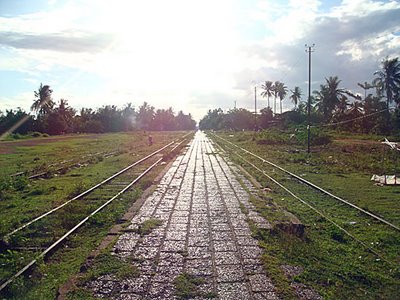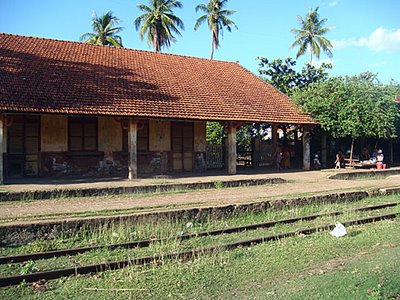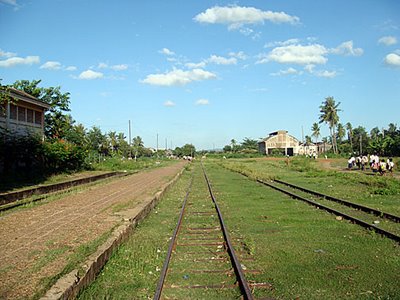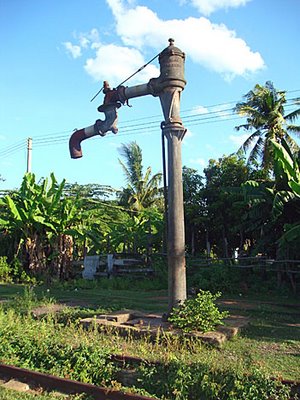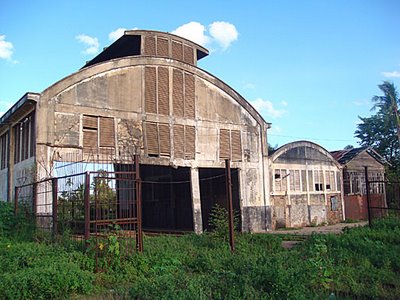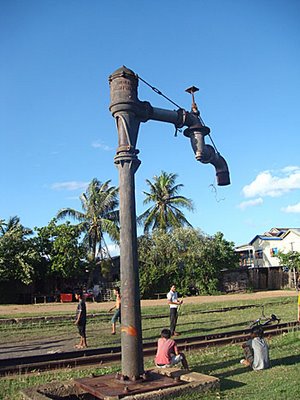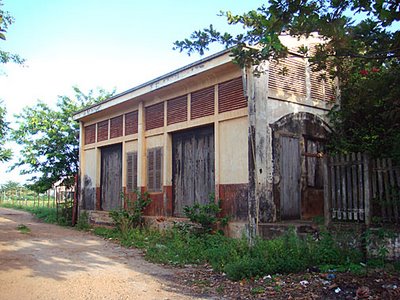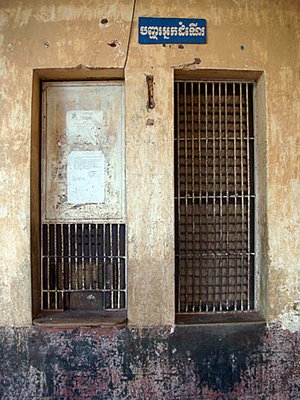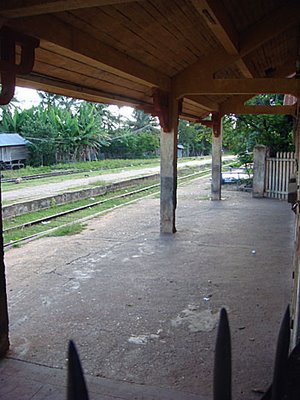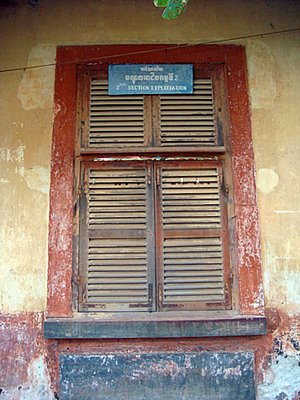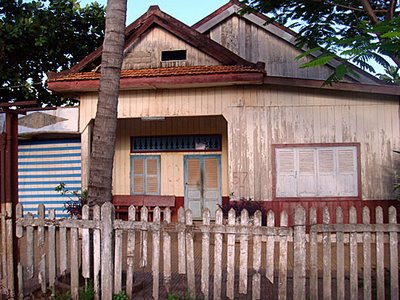Pursat - out of service
On the way back to Phnom Penh yesterday afternoon, I paid my second visit to Pursat railway station, and a step-back in time. The only thing that was missing were the trains. The station and surrounding buildings are in pretty much the same condition as when they were being used regularly in bygone times. A few wooden norries - the wooden platforms that are placed on wheels and used by the locals in place of a regular train service - were sitting forlornly in the shade and the whole area rang to the sound of children who'd just finished school for the day. The station itself is closed and not in use. The one train that comes from the capital each week chugs through Pursat at a snail's pace. I was hoping that two railway engines that were housed at Pursat a few years ago were still in the engine sheds, but alas they have disappeared. The sheds themselves are in poor condition. Nearby were two swan-necked water pumps, used to fill the water tanks on the engines, seemingly bought from Germany many moons ago. I'm told that the families who live along the side of the tracks will be relocated once the grand plans to restore the railway to its past glories take shape, as part of an Asian rail system that will stretch from China to Singapore. Big plans, big costs and some way off into the distance. The yellowing buildings surrounding the barred ticket windows would've included a waiting room and accommodation for the station master and railway employees in the past. Today some buildings are padlocked shut whilst others house families who will be part of that relocation proposal. The real heyday of the Cambodian railways was in the 1930s and then again under the reign of Sihanouk in the 1950s and '60s before it fell into disrepair. I've always had a soft spot for railways, having been a train-spotter in my youth back in England, and my nostalgic visit to Pursat was a half-hour well spent.
Labels: Pursat railway station
